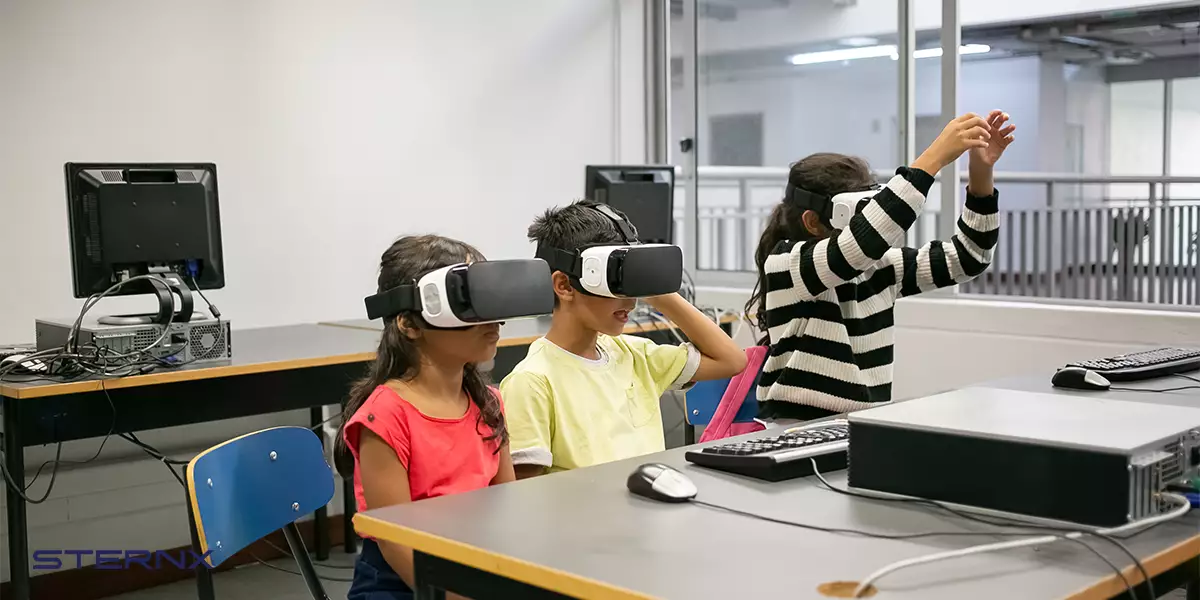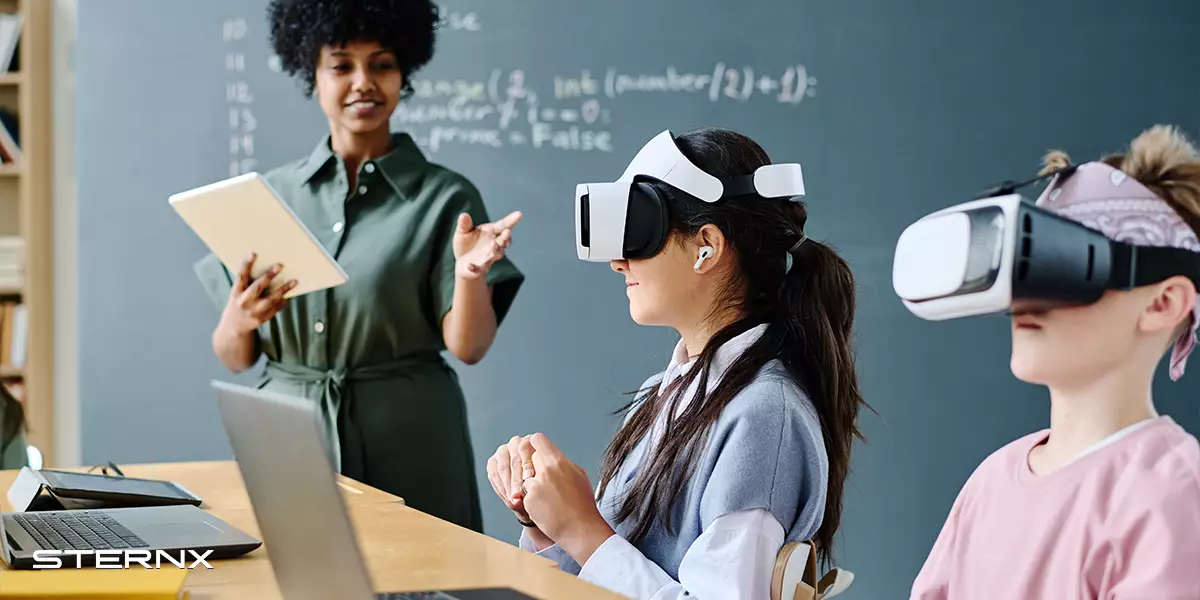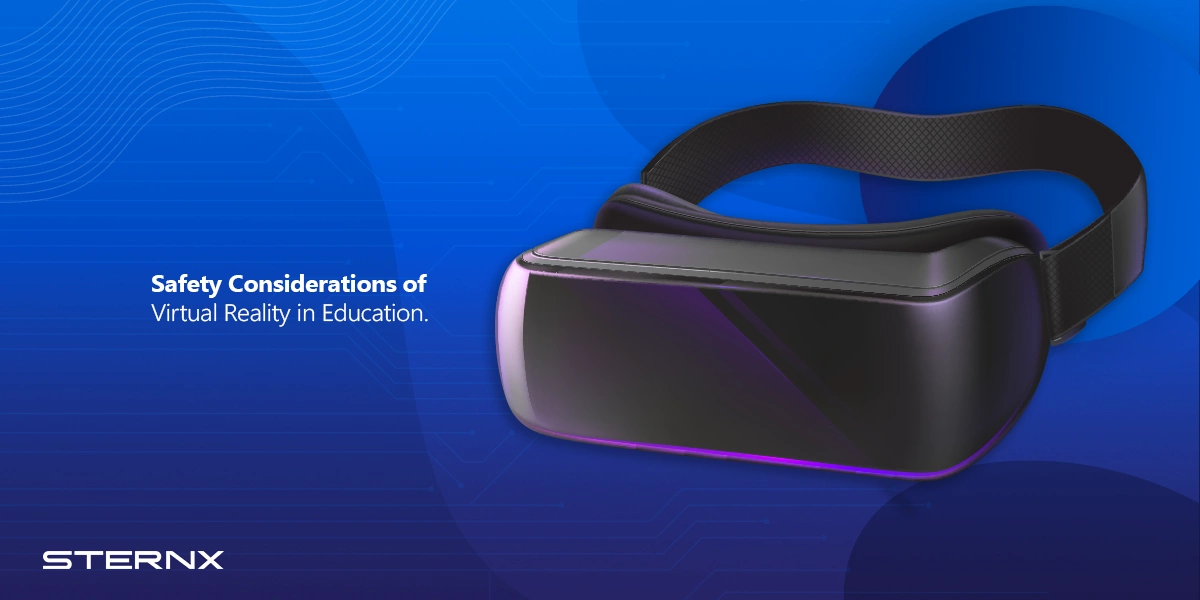Virtual reality (VR) technology has exploded in popularity in recent years. While VR was once seen as a niche technology reserved for gaming and entertainment, it is now being adopted across industries, including education. VR offers immersive simulated environments and experiences that can enhance learning and engagement for students. However, as with any new technology, there are both advantages and potential drawbacks to implementing Virtual Reality in Education. In this article, we will explore the exciting possibilities of VR for enhancing education, while also considering the limitations and safety considerations that should be kept in mind.
Table of Contents
ToggleThe Potential Benefits of Virtual Reality in Education
VR has the potential to transform education by providing unparalleled immersion that makes abstract concepts more concrete. Here are some of the key potential benefits of using VR technology in schools and universities:
Enhanced Engagement and Motivation with VR in Education
One of the most touted benefits of VR is its ability to heighten student engagement and motivation. By transporting students into stimulating 3D environments related to what they are learning, VR can provide an interactive world that feels real and grabs their attention. Rather than passively listening to lectures, students can take an active role in VR simulations, which can lead to higher engagement.

Improved Understanding and Memory Retention with Virtual Reality in Education
Research indicates that immersive VR experiences can lead to improved learning outcomes and memory retention compared to traditional teaching methods. Active learning in simulated 3D environments can help students grasp abstract concepts through direct experience. Interacting with educational content in an immersive VR environment can lead to better cognitive absorption and recall.
Access to Impossible or Prohibitively Expensive Experiences
VR makes it possible to visit reconstructed historical sites, explore outer space, dive to the depths of the ocean, or interact with molecular structures—all without leaving the classroom. VR field trips provide access to places that would otherwise be impossible or too expensive to experience firsthand. This can bring to life topics from history, science, and more.
Adaptive Learning and Personalized Instruction with VR in Education
Virtual Reality in Education programs can adapt the learning experience to each student’s level and needs. Adaptive VR can provide personalized learning paths, practice, and feedback. This makes it possible to customize pedagogy in ways that are not always feasible with traditional classroom methods. VR tracking also makes it possible to assess each student’s progress and areas of difficulty in real-time.
Improved Skill Development with Virtual Reality in Education
VR simulations hold great promise for building career-oriented skills from medical procedures to welding to public speaking. VR provides a safe practice environment to develop muscle memory and expertise while receiving real-time feedback. This experiential learning can accelerate skill development before student’s transition to real-world practice.
Increased Inclusiveness and Accessibility
VR presents new opportunities to make learning more inclusive for students with disabilities. It can provide alternative ways to access educational experiences for those who cannot participate in traditional classroom activities. Additionally, VR can help educators better understand disabilities by experiencing simulated limitations. This supports specialized instruction and a more inclusive learning environment.
Clearly, the immersive capabilities of VR open new doors for enriching education. But there are also limitations and risks to consider before implementing VR.
Limitations and Safety Considerations of VR in Education
While VR holds much promise, it also comes with challenges and risks that educators should carefully weigh:
High Costs
A significant obstacle is the high upfront costs of VR equipment and content development. Sophisticated VR setups require powerful computers, headsets, haptic gloves, omnidirectional treadmills, and more. Developing custom educational VR content is also expensive and time-consuming. The costs may be prohibitive for underfunded schools.

Technical Difficulties with Virtual Reality in Education
VR technology can be perceived as frustrating and unreliable if not properly implemented. Technical problems like lag, poor video quality, and tracking errors can negatively impact the VR experience. Setting up and managing the equipment takes time and expertise. Educators need technical support to avoid these pitfalls.
Health and Safety Risks of Virtual Reality in Education
While rare, some users report headaches, eye strain, nausea, and loss of balance due to VR. Long-term health effects remain somewhat unclear. This calls for reasonable time limits and supervised use. VR should be approached carefully for young students or those with medical conditions.
Isolation from Reality
As with any technology, overuse can lead to detachment from real people and settings. Educators should integrate VR thoughtfully alongside peer collaboration and real-world experiences. VR should enhance, not replace, traditional teaching and social development.
Misuse Potential
Like any new technology, VR could potentially be misused by students to access inappropriate or dangerous content. Schools need security precautions, usage policies, and supervision to prevent misconduct.
Limited Human Interaction
VR instruction lacks the nuanced interpersonal dynamics and communication of human teachers. Even the best VR cannot adapt as profoundly as a real educator. VR should not attempt to duplicate the role of classroom teachers who guide discussion, assess needs, and forge connections.
The risks and limitations of VR emphasize that it should be used thoughtfully in education—not as a wholesale replacement for effective teaching practices. With prudent implementation guided by instructional design principles, VR can be a powerful complement to human educators.
Best Practices for Safe and Effective Virtual Reality in Education
Introducing a groundbreaking technology like VR demands a measured, conscientious approach. Here are some best practices educators should consider for integrating VR safely and effectively:
- Carefully evaluate VR content for age-appropriateness, educational value, and technical polish.
- Set time limits for VR exposure based on students’ ages and needs.
- Allow students to opt-out if they feel discomfort—never force VR participation.
- Ensure a spacious physical environment free of obstructions and cables.
- Provide ample padding and protective barriers to prevent injury.
- Train staff to properly fit, adjust, sanitize and supervise the use of headsets.
- Do not allow food, drinks or chewing gum near VR equipment.
- Start each session by explaining proper usage and rules to students.
- Monitor students and stop the experience if any distress is observed.
- Have a trained staff member always present when VR equipment is in use.
- Institute school policies and online filters to prevent access to dangerous VR content.
- Survey students for feedback to continually refine VR implementation.
With deliberate procedures centered on student wellbeing, the benefits of VR can be harnessed while minimizing risks.
Virtual Reality in Education holds incredible potential to redefine learning. But as with any powerful technology, it demands wise oversight and an ethics-first approach. Moving forward, VR is poised to become an integral part of the classroom experience. Educators who embrace its immersive capabilities—while establishing student digital safety guardrails—will lead the way in tomorrow’s Virtual Reality in Education enabled.
Summary
Virtual Reality in Education opens new frontiers for experiential learning that makes education more engaging, interactive, and accessible. However, realizing VR’s full potential requires mitigating risks through cautious procedures and supervision. Prudent, student-centered implementation will allow educators to unlock VR’s benefits while avoiding pitfalls. Harnessed appropriately under teachers’ guidance, VR can profoundly enrich how students experience learning.
